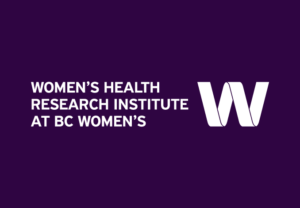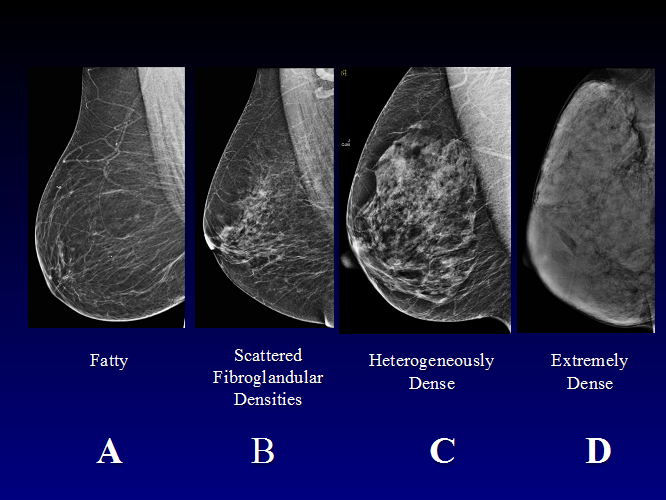
WHAT IS BREAST DENSITY?
Every woman’s breast is composed of fat and breast tissue, but the proportions vary. On a mammogram, fat appears dark gray or black while breast tissue and cancer appear white.
There are 4 categories of breast density. Category C and D are considered “dense breasts” with over 50% density. Dense breasts are common and normal, in fact 43% of women ages 40+ have dense breasts.
WHY DO I NEED TO KNOW IF I HAVE DENSE BREASTS?
- Mammogram accuracy can be impacted by dense breasts.
Dense breasts are the number one reason for cancer being missed by mammography since both cancer and dense tissue show up white on a mammogram. Mammograms miss about 50% of cancers in the highest category (D).
- Women with dense breasts have an increased risk of breast cancer.
The higher the density, the higher the cancer risk. Cancer is 4-6 times more likely in the highest density category (D) than the lowest category (A)
- Higher risk of an interval cancer.
Women with category D are 18 times more likely to have breast cancer discovered between mammogram screenings when cancer masses are larger and can be felt.
- Higher risk of cancer in the other breast.
Women with breast cancer who have dense breasts are nearly twice as likely to develop cancer in the opposite breast.
- More prevalent risk of cancer than family history.
Dense breasts are a more prevalent risk for developing breast cancer than a family history of breast cancer.
HOW IS BREAST DENSITY DETERMINED?
Breast density is assessed by the radiologist viewing your mammogram. Breast density is not determined by breast size or touch. Dense breasts can feel soft, lumpy or firm and so can fatty breasts.
WHAT CAN I DO IF I HAVE DENSE BREASTS?
- Speak with your doctor about your breast density, any other breast cancer risk factors and your best screening options.
- Perform regular self-exams between screenings.
- A normal mammogram result may not be accurate.
- To improve early detection, you may wish to consider additional screening, such as ultrasound. In BC, screening ultrasound is covered by MSP if you have a doctor’s requisition.
- Consider modifying lifestyle factors such as diet, exercise, alcohol intake and hormone use to decrease cancer risk.
- Continue to have mammograms because they can detect calcifications, which can be the earliest sign of cancer, that aren’t seen on ultrasound.
WHY SHOULD I CONSIDER SUPPLEMENTAL SCREENING?
- Additional screening, such as ultrasound, can increase detection of early stage cancer obscured by dense breast tissue.
- Ultrasound finds an additional 3-4 cancers per 1000 women screened that were not detected by mammogram.
- Ultrasound finds cancers that are small and have not yet spread to the lymph nodes, reducing aggressive treatments and improving rates of survival.
- Early detection of cancer is critical for less invasive treatment and the best outcomes.
For more information, please visit densebreastscanada.ca
